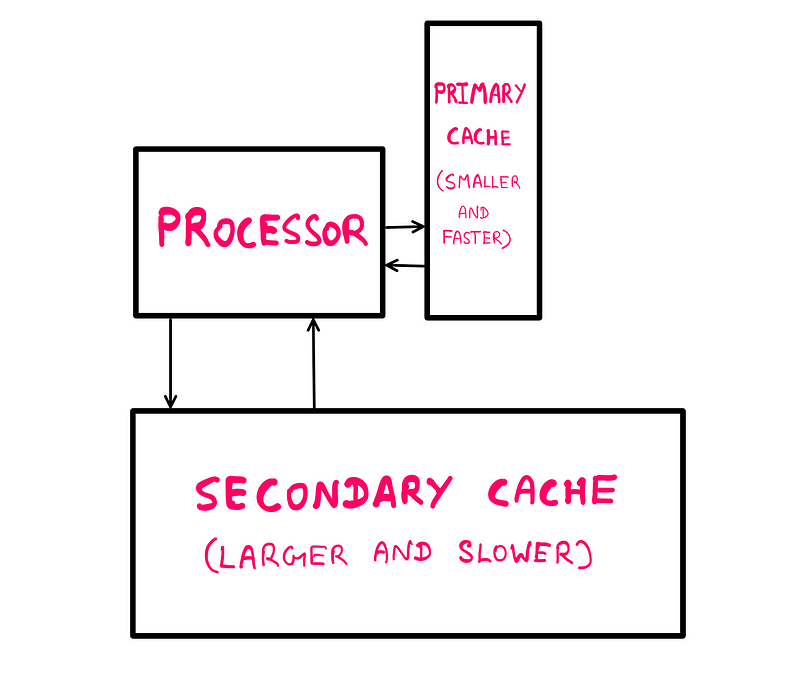Maximizing Real-Life Benefits from Computer Science: Part II
Written on
Understanding the Time-Space-Money Trade-off
In my previous article discussing the advantages of computer science, I delved into various concepts such as parallelism, coordination overhead, pipelining, latency, and throughput. This piece will focus on the time-space-money trade-off, also known as resource trade-off.
We will begin by examining why this problem category is significant in computer science. Following that, we will look at practical examples of these issues at play. Finally, we will discuss how solutions from the realm of computer science can inspire real-world problem-solving. Let’s get started!
The Time-Space-Money Trade-off in Computer Science
In the context of computers, ‘time’ relates to the speed at which a problem is resolved, while ‘space’ pertains to the memory or storage necessary for that resolution. Let’s explore these concepts further before considering the financial aspect.
As mentioned earlier, a standard computer processor can handle information much faster than it can retrieve it from physical storage. If not managed correctly, the processor may find itself waiting idle during data transfers.
To mitigate this, processors are engineered to perform productive tasks while awaiting data. However, they have limited internal storage, leading computer architects to consistently weigh the options between quick processing using the processor’s memory and the slower retrieval from physical storage.
Utilizing physical storage for problem-solving allows for more complex issues to be tackled but at the expense of time. This encapsulates the essence of the time-space trade-off. Now, let’s add the financial dimension with an illustrative example.
Imagine an IoT device like a smart alarm clock. It demands a quick processor but not much memory. Conversely, consider an offshore oil rig or an intergalactic satellite, which requires substantial memory but typically has a slower processor due to power consumption considerations. Lower power usage translates to greater economic efficiency.
Now that we’ve outlined the time-space-money trade-off within computer science, let’s look at how it manifests in everyday situations.
Real-World Applications of the Time-Space-Money Trade-off
To illustrate this concept, consider the grocery shopping scenario depicted in the title image. You have two choices: the ‘Elito’ supermarket, merely 200 meters away, or the ‘Elcheapo’ supermarket, located 5 kilometers away.
While ‘Elcheapo’ offers significantly lower prices, opting for ‘Elito’ saves you considerable time. This scenario exemplifies the time-money trade-off.
Now, picture a birthday party with 20 guests. Unsure if 10 cases of assorted drinks will suffice, you decide to play it safe and order 20 cases. Ultimately, you find that 10 cases would have been adequate, leaving you with 10 extra cases. This situation highlights the time-space trade-off; had you ordered only 10 cases and run out, you would have wasted valuable party time making a last-minute store run.
Having reviewed these real-world examples, let’s explore how we can draw insights from computer science to address such dilemmas.
Leveraging Computer Science for Everyday Solutions
In the tech domain, we tackle the time-space-money trade-off using a method called caching. This approach involves temporarily relocating a small amount of crucial data close to the processor through faster physical storage.
This proximity, combined with a specialized architecture, provides an effective compromise for time-space-money trade-off challenges. Here’s a visual representation of what a caching memory architecture might look like:

So, how can we apply the caching strategy to solve real-life issues? In simple terms, keep important items nearby while placing less critical ones further away.
This may seem straightforward, yet many of us clutter our environments with unnecessary items, impacting our time-space-money decisions. For instance, in your grocery scenario, you could prioritize essential items from ‘Elito’ for immediate needs while visiting ‘Elcheapo’ less frequently for bulk purchases.
In the party example, you might buy 10 cases initially, and when you’re halfway through the 8th case, reorder more via a premium delivery service. This approach saves time even if it incurs additional costs, eliminating the need for excess storage.
Examining how tech companies exploit this principle can provide further insights.
Final Thoughts
In summary, both computers and humans face the challenge of choosing between quicker, costlier options (in terms of space and/or money) and slower, cheaper alternatives. Computer science addresses this dilemma through caching techniques.
Caching promotes high-speed memory access close to the processor. Similarly, individuals can optimize their environments by keeping essential items within reach and relegating less important ones to the periphery.
You can apply this principle to organize your workspace, select your future home, or even develop a mobile application. The potential real-world applications are virtually endless!
For further reading, you might find interest in these topics: Why Are Analogue Computers Really On The Rise Again? and How To Benefit From Computer Science In Real Life (I)?
If you'd like to support me as an author, consider contributing on Patreon.
Discover why studying computer science can open doors for you.
Learn about five crucial insights before embarking on a computer science journey.